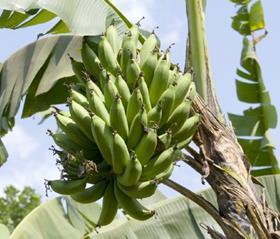
An expert on aerial crop spraying believes that the Philippines comply with international standards on the practice, after spending three days in Mindanao observing spraying to combat sigatoka disease.
Dr Andrew Hewitt has worked on aerial spraying in Australia, New Zealand, Canada, the UK, the US, Malaysia, Costa Rica, Chile and other Latin American countries, the Business Mirror reported.
The Philippines Department of Health last year recommended the banning of aerial crop spraying after expressing concerns that ‘drift' from the practice posed a threat to the health of people in nearby communities, but Dr Hewitt believes this method is the safest from of application.
'The spraying that we observed was very professional,' he said in a press release.
'I believe that the aircraft is the better application method, precisely putting the spray on the crop without drifting to the neighbouring community.
'In the US, they do a lot of spraying of rice, for example, cotton, grains and many crops, with aircraft. And it is done safely, and it is regulated and is done professionally.
'In Queensland, where I worked in Australia, they spray bananas with aircraft and that's done very safely and there's no health issue,' he added.
Dr Hewitt said that aerial spraying performs better than ground spraying because aircraft spray downwards onto the banana plant, as opposed to upwards or sideways which increases the chance of missing the target.
After spending years conducting extensive research throughout the globe on the safest methods of spraying, Dr Hewitt is convinced that aerial application is the safest and most effective way of controlling disease.
'In the US, we spent US$23m in looking at drift from aerial spraying as well as other spray types. So we did hundreds of studies into different aircraft, nozzles, droplet size, temperature, relative humidity, wind speed, height of the aircraft, and we developed models that we can then use to help us spray safely.
'My opinion is that you have these things in place in the Philippines, but maybe not formally in a written document as a national standard. So that is something I'd be pleased to help draft - a single page of guidelines for how you should spray,' Dr Hewitt said.



